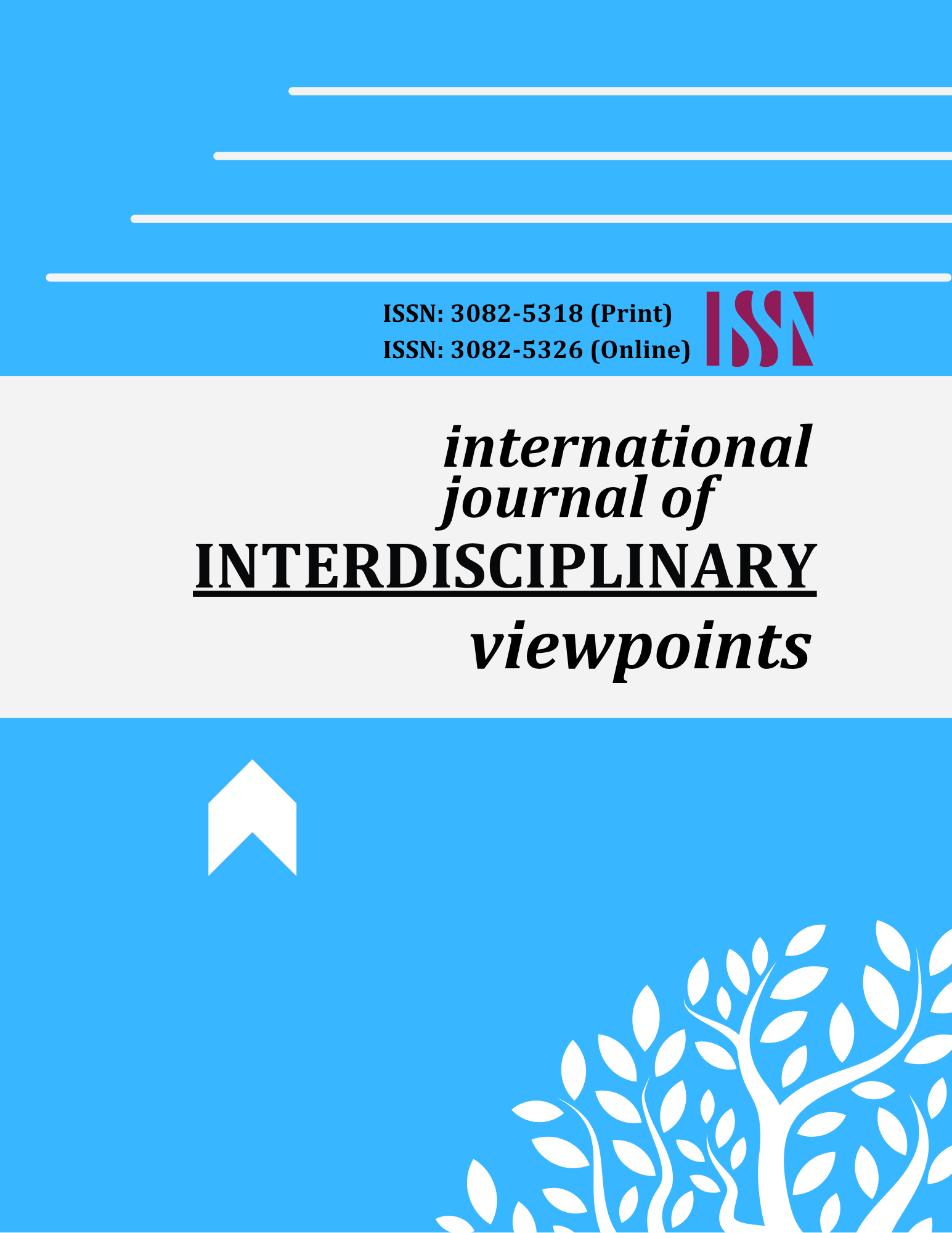Is the Likert Scale Still IN in 2025? Revisiting Usage, Interpretation, and the Rounding Paradigm
DOI:
https://doi.org/10.64612/ijiv.v1i5.36Keywords:
Likert scale, ordinal data, measurement integrityAbstract
TheLikert scale remains one of the most valuable instruments for studying education and the social sciences, as it is simple to use, quick to administer, and adaptable. Its effectiveness will be determined by how successfully it is used in 2025. Experts debate whether it is beneficial or detrimental to group data and analyze it using parametric tests. Some argue that this strategy is easily abused, particularly when individuals believe that decimalization implies completely revealing what people think. This study found that these kinds of actions can give individuals an inaccurate impression about how accurate something is and influence how decisions are made in business, education, research, and politics. To address these issues, a rounding-based understanding technique is proposed. It employs mode-based tests, ordinal reasoning, and rounding to whole numbers to ensure that the findings are accurate. To maintain the validity and utility of the Likert scale, researchers must apply it in a methodologically sound, unambiguous, and ethically correct manner.
References
Abreh, M. K., Okyere, M., Osiakwan, J., & Adom, G. (2025). Navigating the Use and Misuse of Likert Scales in Counseling and Development Research. Measurement and Evaluation in Counseling and Development, 1-7. https://doi.org/10.1080/07481756.2025.2499964
Alabi, A. T., & Jelili, M. O. (2023). Clarifying likert scale misconceptions for improved application in urban studies. Quality & Quantity, 57(2), 1337-1350. https://doi.org/10.1007/s11135-022-01415-8
Anjaria, K. (2022). Knowledge derivation from Likert scale using Z-numbers. Information Sciences, 590, 234-252. https://doi.org/10.1016/j.ins.2022.01.024
Asfuroğlu, U., Asfuroğlu, B. B., Özer, H., Gönül, İ. I., Tokgöz, N., Inan, M. A., & Ucar, M. (2022). Which one is better for predicting extraprostatic extension on multiparametric MRI: ESUR score, Likert scale, tumor contact length, or EPE grade?. European Journal of Radiology, 149, 110228. https://doi.org/10.1016/j.ejrad.2022.110228
Aybar, C., Pérez, V., & Pavía, J. M. (2024). Scale matters: unravelling the impact of Likert scales on political self-placement. Quality & Quantity, 58(4), 3725-3746. https://doi.org/10.1007/s11135-023-01825-2
Dauzón-Ledesma, L., & Izquierdo, J. (2023). Language learning investment in Higher Education: Validation and implementation of a Likert-scale questionnaire in the context of compulsory EFL Learning. Education Sciences, 13(4), 370. https://doi.org/10.3390/educsci13040370
Effatpanah, F., Ravand, H., & Doebler, P. (2025). Differential Item Functioning Analysis of Likert Scales: An Overview and Demonstration of Rating Scale Tree Model. Psychological Reports, 00332941241308806. https://doi.org/10.1177/00332941241308806
Feuerstahler, L. (2023). Scale type revisited: Some misconceptions, misinterpretations, and recommendations. Psych, 5(2), 234-248. https://doi.org/10.3390/psych5020018
Heo, C. Y., Kim, B., Park, K., & Back, R. M. (2022). A comparison of Best-Worst Scaling and Likert Scale methods on peer-to-peer accommodation attributes. Journal of business research, 148, 368-377. https://doi.org/10.1016/j.jbusres.2022.04.064
Huh, I., & Gim, J. (2025). Exploration of Likert scale in terms of continuous variable with parametric statistical methods. BMC Medical Research Methodology, 25(1), 1-10. https://doi.org/10.1186/s12874-025-02668-1
Jebb, A. T., Ng, V., & Tay, L. (2021). A review of key Likert scale development advances: 1995–2019. Frontiers in psychology, 12, 637547. https://doi.org/10.3389/fpsyg.2021.637547
Kaiser, C., & Lepinteur, A. (2025). Measuring the Unmeasurable? Systematic Evidence on Scale Transformations in Subjective Survey Data. arXiv preprint arXiv:2507.16440. https://doi.org/10.48550/arXiv.2507.16440
Lehmann, R., & Vogt, B. (2024). Improving Likert scale big data analysis in psychometric health economics: reliability of the new compositional data approach. Brain Informatics, 11(1), 19. https://doi.org/10.1186/s40708-024-00232-z
Lionello, M., Aletta, F., Mitchell, A., & Kang, J. (2021). Introducing a method for intervals correction on multiple Likert scales: A case study on an urban soundscape data collection instrument. Frontiers in psychology, 11, 602831. https://doi.org/10.3389/fpsyg.2020.602831
Lowis, D. (2025). Ethnography First? Rethinking the Integration of Ethnography and Survey Methods in Mixed-Methods Research. International Journal of Qualitative Methods, 24, 16094069251346254. https://doi.org/10.1177/16094069251346254
Ponsiglione, A. M., Amato, F., Cozzolino, S., Russo, G., Romano, M., & Improta, G. (2022). A hybrid analytic hierarchy process and likert scale approach for the quality assessment of medical education programs. Mathematics, 10(9), 1426. https://doi.org/10.3390/math10091426
Robinson, J. (2024). Likert scale. In Encyclopedia of quality of life and well-being research (pp. 3917-3918). Cham: Springer International Publishing. https://doi.org/10.1007/978-3-031-17299-1_1654
Rosenthal-von der Pütten, A., Arndt, J., Pieczykolan, A., Pohl, M., & Jung, M. (2025). Within, Between, Forced Choice, or Likert Scale? How Methodological Decisions Influence Recognition Rates in HRI Recognition Studies. International Journal of Social Robotics, 1-14. https://doi.org/10.1007/s12369-025-01231-8
South, L., Saffo, D., Vitek, O., Dunne, C., & Borkin, M. A. (2022, June). Effective use of Likert scales in visualization evaluations: A systematic review. In Computer Graphics Forum (Vol. 41, No. 3, pp. 43-55). https://doi.org/10.1111/cgf.14521
Suárez-García, A., Álvarez-Hernández, M., Arce, E., & Ribas, J. R. (2024). Exploring the efficacy of binary surveys versus likert scales in assessing student perspectives using bayesian analysis. Applied Sciences, 14(10), 4189. https://doi.org/10.3390/app14104189
Yamashita, T. (2022). Analyzing Likert scale surveys with Rasch models. Research methods in applied linguistics, 1(3), 100022. https://doi.org/10.1016/j.rmal.2022.100022
Yang, R., & Yagi, H. (2024). Evaluating occupational values in Japan's urban farming: A comparison between the Likert scale and Best-Worst Scaling methods. Cities, 155, 105485. https://doi.org/10.1016/j.cities.2024.105485
Zeng, B., Jeon, M., & Wen, H. (2024). How does item wording affect participants’ responses in Likert scale? Evidence from IRT analysis. Frontiers in Psychology, 15, 1304870. https://doi.org/10.3389/fpsyg.2024.1304870
Zeng, B., Wen, H., & Jeon, M. (2025). Ideal Point or Dominance Process? Unfolding Tree Approaches to Likert Scale Data with Multi-Process Models. Multivariate Behavioral Research, 1-32. https://doi.org/10.1080/00273171.2025.2496505
Downloads
Published
How to Cite
Issue
Section
License
Copyright (c) 2025 Rogen A. Doronila, Rujonel F. Cariaga

This work is licensed under a Creative Commons Attribution-NonCommercial-ShareAlike 4.0 International License.

